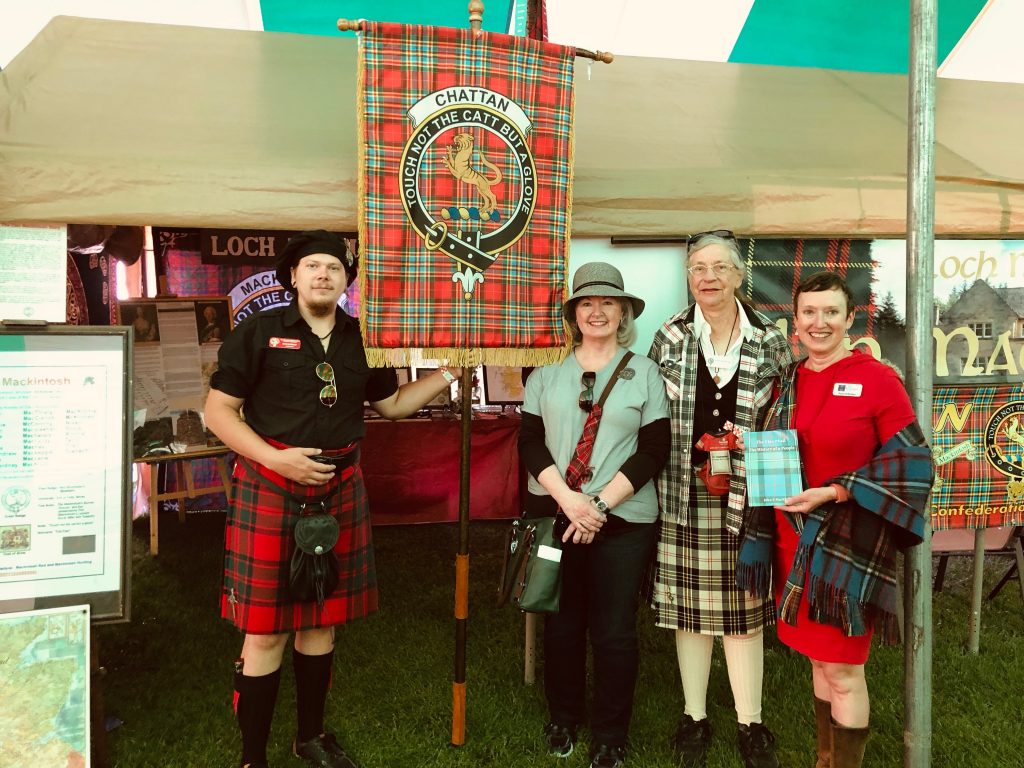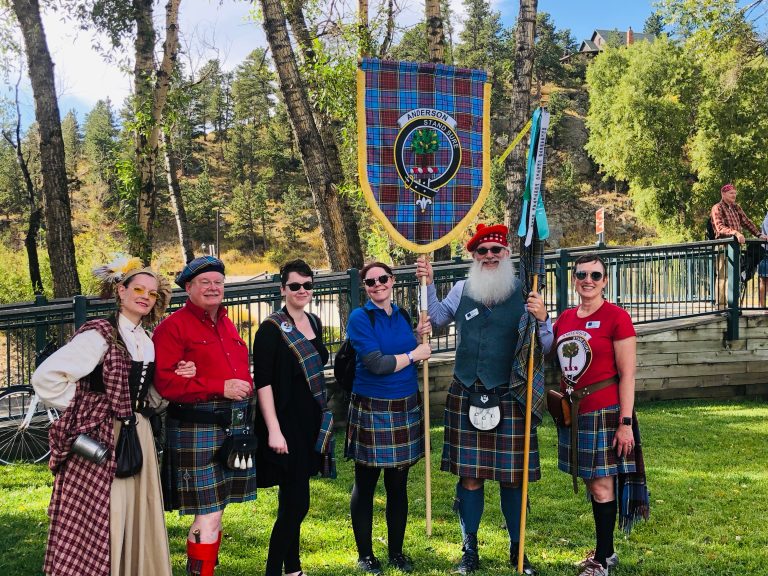Joining a Scottish clan society or association is an excellent way to connect with your Scottish kinfolk throughout the world and to further explore your heritage. Officially, you don’t need to take any action to be considered part of a Scottish clan because every person who has the same surname as the chief is deemed to be a member of the clan. In addition, any person who offers allegiance to the chief is recognized as a member of the clan unless the chief decides that he will not accept that person’s allegiance. But joining a clan society or association offers benefits beyond claiming that connection.
While clans have existed in Scotland since the late Middle Ages, clan societies or associations as we know them today in the United States have a more recent origin. Some were formed in the mid to late 1800s or early 1900s, but most got their start in the 1950s. Post World War II, people began to have the time and money to spend on Scottish heritage and tourism, and so clan societies became popular.
As I explained in “Were My Ancestors Part of a Scottish Clan,” there is no official registry of clans, but the Council of Scottish Clan and Associations provides a list of all the societies that it has contacted, which includes nearly 160 clan societies or family associations. According to some undocumented estimates there are more than 250 clan societies or family associations in the United States.
Ways to connect with your clan
Once you’ve learned if your clan has an official society, there are several ways to connect. Visiting a local or regional Scottish or Celtic festival or Highland games is probably the most fun way. While not all clan societies or associations participate in all events, most try to have representatives at the larger Highland games in the United States. When attending, look for the clan tents and then find your clan; often the event program will list the participating clans, but other clans at the festival may be able to help you find your clan tent.
If your clan doesn’t participate in an event near you, you may be able to find them online. Most clans have websites as well as Facebook pages or groups. The clan website will be the best place to get information about membership and to find a membership form either to download or complete online. Be aware that clans have branches all over the world; and may handle membership differently based on location. For example, Clan Gunn has a website for the Clan Gunn Society UK and for Clan Gunn Society of North America; they are connected, but you’ll want to join the North American branch.
Do I need to prove my ancestry to join?
In the past, some clans required genealogical proof in order to become a member. But that has changed, primarily because without a membership base, clans wouldn’t exist in modern society. Most clans still ask for a surname on the membership form. Some distinguish between full membership (voting rights) for those that have a clan or sept surname or an affiliate/associate membership for those who want to join without having the surname connection. And some clans don’t ask about surnames and welcome all who want to join.
How does membership work?
Most clans offer an annual ($25-$40), three- to five-year ($75-$100) or lifetime membership ($300-$500). These prices will vary among the clans as will the benefits of your membership. For example, your $25 annual membership to the Clan Donnachaidh (Gaelic for Robertson) Society includes an annual report from the clan; the clan society newsletter (snail mail or email); support for the clan museum in Perthshire, Scotland; access to the clan DNA project; participation as a voting member at the annual general meeting of the clan in Scotland; and connection to clan members worldwide.
Other benefits of being an official member of a Scottish clan society might include attending special events like St. Andrew’s Day or Burn’s Night Suppers that may be hosted by your clan or other clan groups, and helping to restore historic properties associated with the clan. For example, Clan MacLean is raising funds to restore Duart Castle on the Isle of Mull, one of the few original clan seats that has remained in the hands of the chief while still being open to the public.
One thing to keep in mind is that most clan societies are nonprofit organizations run by volunteers so don’t be surprised by an out-of-date website or slow response when trying to contact them (I speak from personal experience as the current volunteer webmaster for Clan Anderson Society!). They typically have officers at the national level as well as their clan chief, if they indeed have one. Many also have state or regional commissioners who help recruit and organize “conveners” or volunteer tent hosts for the numerous Scottish and Celtic festivals throughout the world.
What I’ve learned about joining a clan
Similar to the saying that you can’t choose your family, you also can’t choose your clan or can you? If you have a surname like Buchanan, Cameron, Campbell or Wallace, your choice of clan seems pretty straightforward. But what if you go to a local Scottish festival, meet members of the clan associated with your surname and don’t find them particularly welcoming or friendly? It does happen. In visiting festivals throughout the United States, I’ve found that the quality of the welcome varies quite a bit from clan to clan. If all you care about is the membership certificate and an occasional clan newsletter, then the quality of the people probably won’t matter to you in choosing a clan society to join. But if you want to get involved, attend Highland games, volunteer to host the clan tent and really connect with your clan kinfolk around the world, then those local folks make a difference.

At clan circles or clan gatherings, which are often held by clans after the normal business hours of the festivals, I’ve heard clan members express how much joy they’ve experienced in finding and connecting with their clan family. People who moved from one part of the country to another and needed new friends said they were able to find that within their Scottish clan. In our increasingly digital society, having an opportunity to connect in real life with people around a shared love of Scottish heritage is something worth considering.
My advice is to join a clan based on the people first, then the surname. My husband is a member of the Clan Anderson Society. Upon learning his Scottish ancestry, he found family connections to both the Ross and Anderson clans, which is not surprising since Anderson is also a sept of Ross. Fortunately for us, one of the first local Highland games we attended had representatives from both clans. We liked both, but decided to get involved with Clan Anderson because they needed help hosting the clan tent at upcoming festivals in Colorado. Since then, we’ve found the national Clan Anderson Society to be a bit disorganized — perhaps because they are a primarily United States-based clan, forming in the 1970s at the Grandfather Mountain Highland Games, and they haven’t had a clan chief since the 1500s.
Most important for my husband and I is that we have gained Scottish-American kinfolk and friends from joining a clan and from being involved in activities such as hosting a clan tent, attending special events and of course, sharing a wee dram! Don’t claim your clan just because you have the surname, and don’t settle for a membership certificate either, join a Scottish clan society and get involved!
Next up, how I met a 5th cousin-once removed through my clan connections.


